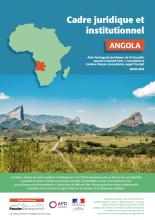Land Library Search
Through our robust search engine, you can search for any item of the over 73,000 highly curated resources in the Land Library.
If you would like to find an overview of what is possible, feel free to peruse the Search Guide.
/ library resources
Showing items 1 through 9 of 162.This report provides a critical update to the 2017 Rights and Resources Initiative (RRI) analysis Power and Potential. It evaluates the extent to which national laws, as of 2024, recognize the specific community forest rig
Les fiches « Analyse des cadres juridiques et institutionnels » du CTFD fournissent par pays, un état des lieux des dispositifs organisant le foncier et l’accès aux ressources naturelles (renouvelables ou non), et en étudient les liens avec les processus de décentralisation à l’œuvre dans les dif
Chaque année, ce rapport de la FAO, le plus consulté, présente le nombre de personnes sous-alimentées dans le monde et préconise des stratégies pour combattre la faim et la malnutrition. Suite à la publication du rapport mondial, de nombreuses statistiques sont désagrégées en rapport régionaux.
This study addresses the significant issue of land fragmentation in Ethiopia, which is characterized by small, irregular, scattered parcels with no or adequate road access.
This guide aims to help investors identify the impacts and mitigation measures to minimize the impacts of the proposed investments in the agricultural and forestry sector in Laos.
The case study explores the intersect between customary tenure systems and gender roles in two villages in Phongsali district in the north of Laos. The country has a diverse population of ethnic communities who depend on forests and other natural resources for their livelihoods.
Indigenous communities have experienced a loss of access and ability to contribute to the management of natural resources due to removal from lands, marginalization, and conflicting knowledge systems.
Un régime alimentaire sain composé de légumes, de protéines et de fruits frais est essentiel pour éliminer la faim et toutes les formes de malnutrition et atteindre l’Objectif de développement durable 2, à savoir «Faim Zéro» à l’horizon 2030.
Measuring gender inequality in land ownership is essential for assessing progress in women’s economic empowerment, tracing the impact of progressive laws on actual practice, and monitoring SDG 5 on gender equality.







